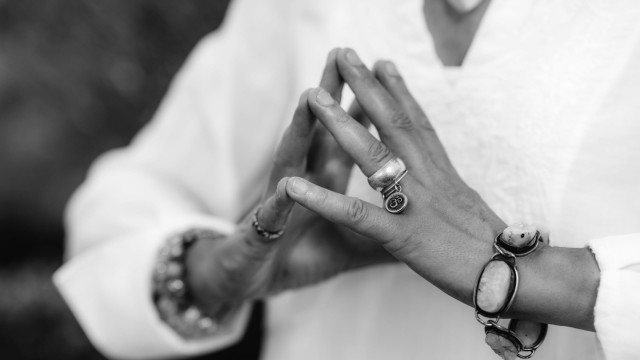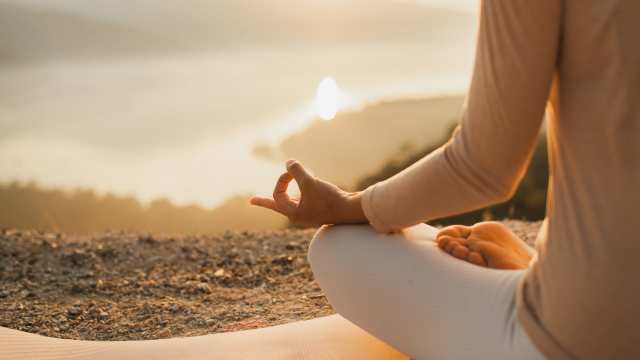Dream Yoga for the Mind and Soul

Yoga has been an important part of my wellbeing journey from the very beginning. Alongside mindfulness, I found it to be the best tool to slow down my thoughts after a long day of working; rushing from meeting to meeting, barely pausing for lunch, and juggling high-stake decision-making with more pointed quantitative analysis.
I found that beginner’s yoga was enough to awaken my senses and bend me out of what I like to call ‘desk-chair inertia’. So, when a friend introduced me to dream yoga, I was initially reluctant to try it. Why push myself more when I already felt stretched enough by my current yoga practice? What’s more, the premise of dream yoga – that it should transcend fears, boost creativity, and bring us enlightenment – seemed far-fetched to me.
Now, imagine you have the ability to fly above a turquoise, clear ocean on a sunny day. The wind is in your hair, and maybe for the first time in a while, you feel truly alive.
Of course, you are dreaming; but it does not feel like a dream. You can feel all of the sensations associated with the state you are in. Then, all of a sudden, you see a shark in the water. You have a phobia of sharks in real life, which is something that prevents you from enjoying your life to the fullest. A lucid dream would be a way to face your fear in a controlled, safe environment. This is why lucid dreaming is a wellbeing tool that cannot be replaced by any other, less demanding method.
Lucid dreaming is what is taught and nurtured by dream yoga, which is a more advanced form than the beginner's stuff I was doing, so it took a while for me to get my head round it. And that’s not to say I’ve mastered it now, but it has certainly helped me navigate and work through certain problems of my own.
I recently read an article about Charlie Morley, a world-renowned teacher of dream yoga, who claims that:
Dream yoga is an opportunity to explore emptiness, and to explore beyond the mind [...] Meditation is how we may do this in waking life, but the Tibetan Buddhists say just one minute of meditation in a lucid dream is the equivalent of a 30-day retreat.
Once I experienced the benefits of this practice, I began to understand the validity of his ideas. I began to understand that lucid dreaming is akin to the best type of exposure therapy: there is no physical danger you will ever be in; you can face your fears safely. No one is judging you. It is just you, in your dreamlike state, and whatever your mind is capable of conceiving. I found it truly empowering.
One may ask, then, how can this state be induced? The two practices I found the most helpful were writing down my dreams, and meditating before going to bed. Writing down your dreams forces your wakeful mind to recall them; in turn, it becomes more aware of (and accustomed to) the dream state. Meditating before bed can increase the amount of REM sleep that you experience, which is the phase of sleep during which lucid dreaming happens. Given that the REM sleep phase is the restorative phase, even if you don't have lucid dreams, you will still get some benefits!
Sharing this practice with the world fills me with joy. So often is lucid dreaming misunderstood and thought of as something unscientific. In reality, it is just another way for us to deal with the issues that we face. As Stephen LaBerge, a psychophysiologist at the Lucidity Institute wisely said:
When you escape from a nightmare by waking up, you haven’t dealt with the problem. But staying with the nightmare and accepting its challenge, as lucidity makes possible, allows you to resolve the dream problem in a way that leaves you healthier than before.
I invite you to give it a try.





